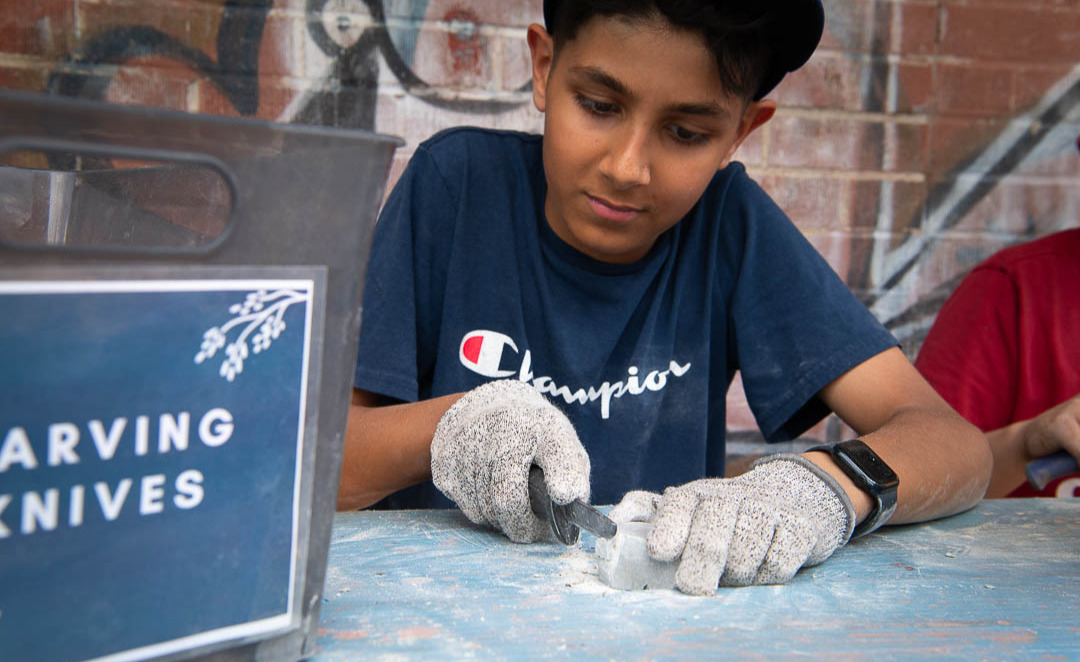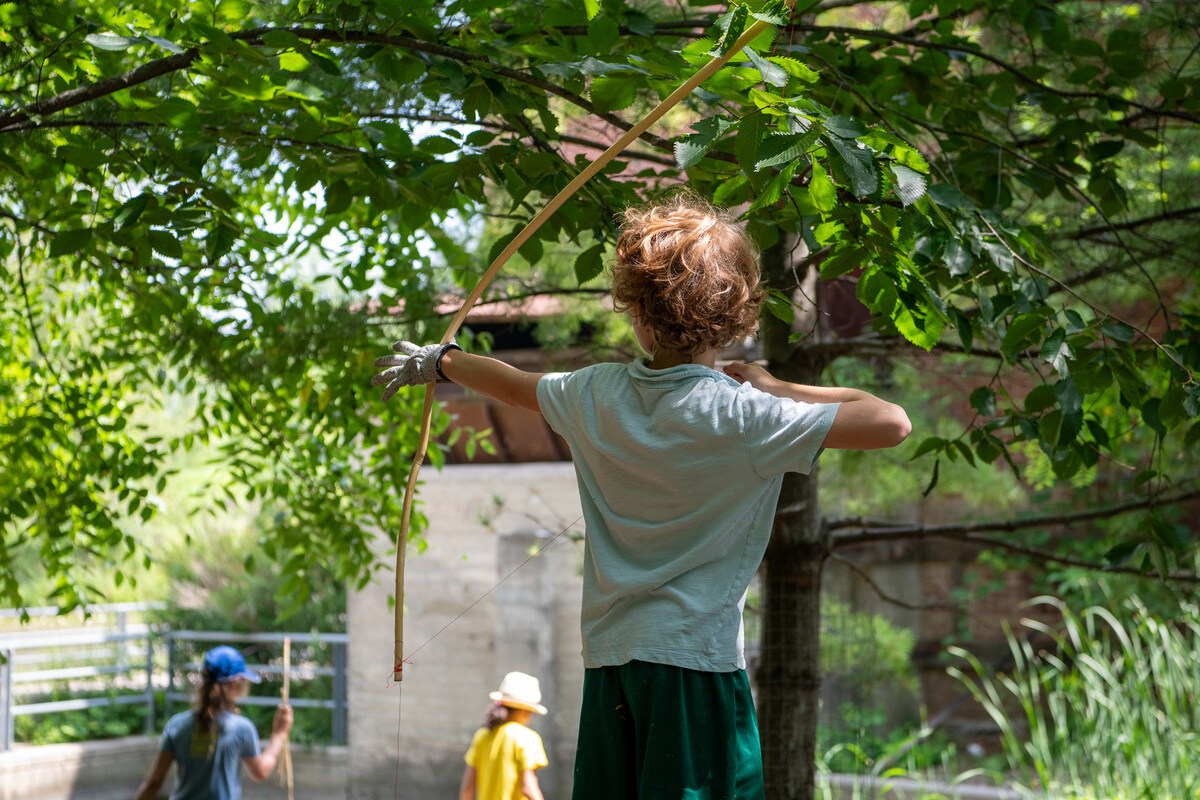Did you run wild as a kid? Do you remember climbing trees, playing in a creek or simply running around unsupervised until the streetlights came on?
Across Canada, a growing number of educators, outdoor leaders and health professionals are advocating for risky play: activities like climbing and jumping, using tools like knives or hammers, or even learning to light fires. Far from being careless or unsafe, this kind of play can help kids build confidence, resilience and real-world decision-making skills.
We’ve seen at Evergreen Brick Works how these experiences unlock independence and spark a deeper connection to nature.
A 2024 report from the Canadian Paediatric Society (CPS) backs this up — showing the developmental benefits of letting kids take manageable risks. So, we spoke with one of its co-authors to dig into the research and real-life impacts of risky play.
You know what’s not risky? Reading on. Let’s dive in.
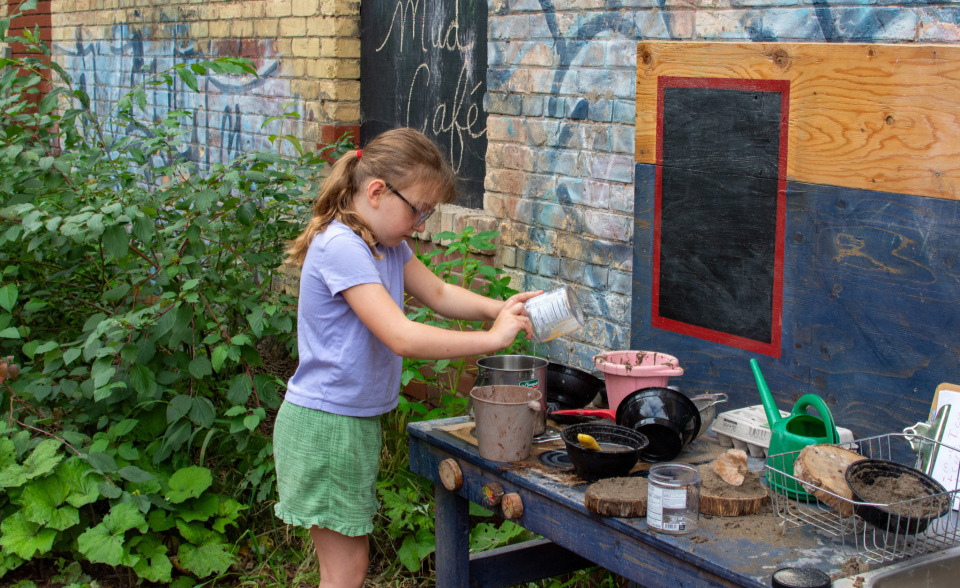
What is (and isn’t) risky play?
So, what does risky play really mean? It turns out that it’s already well defined in literature, says Dr. Suzanne Beno, Medical Co-Director of the Trauma Program and Emergency Physician at The Hospital for Sick Children (SickKids).
Beno co-authored the position statement released by the CPS encouraging risky play to help improve physical, mental and social-emotional health in children.
“Risky play is defined by thrilling and exciting forms of free play that involve uncertainty of outcome and a possibility of physical injury,” says Beno, who is also Chair of the Injury Prevention Committee at CPS.
The types of risky play defined in the position statement include playing at height (climbing and jumping), playing at speed (cycling, sledding and running), play that involves tools (knives, hammers and ropes), play involving dangerous elements (playing near fire or water), rough-and-tumble play (play fighting), and play with risk of getting lost (unsupervised or limited supervision).
The key, Beno says, is to distinguish between risks and hazards.
“A risk is something that a child can recognize and evaluate and then decide on the course of action based on previous experience and what they know of their skill set. A hazard is where there’s a potential for injury that’s beyond a child’s capacity to recognize or to manage that hazard. An example would be improperly anchored playground equipment — that’s not a risk that a child could have anticipated.”
In other words, risky play is not leaving children unsupervised in potentially dangerous situations, ignoring safety measures or pushing children to take risks beyond their comfort level.
At Evergreen, risky play is a key component of our nature play and education programming — both as an approach we teach in our professional development workshops and as a core part of our camp experiences.
“Risky play is a really important part of our programming,” says Charlotte Haney, one of Evergreen’s outdoor educators. “Risk can come in all forms. We have some more obvious ones, like our whittling program, where the children get to use real carving knives. We have our fire programming, where we actually learn how to light fire and work with fire. And then we just have the risks of exploring and being out in nature — of climbing on a rock or jumping from one log to the next.”
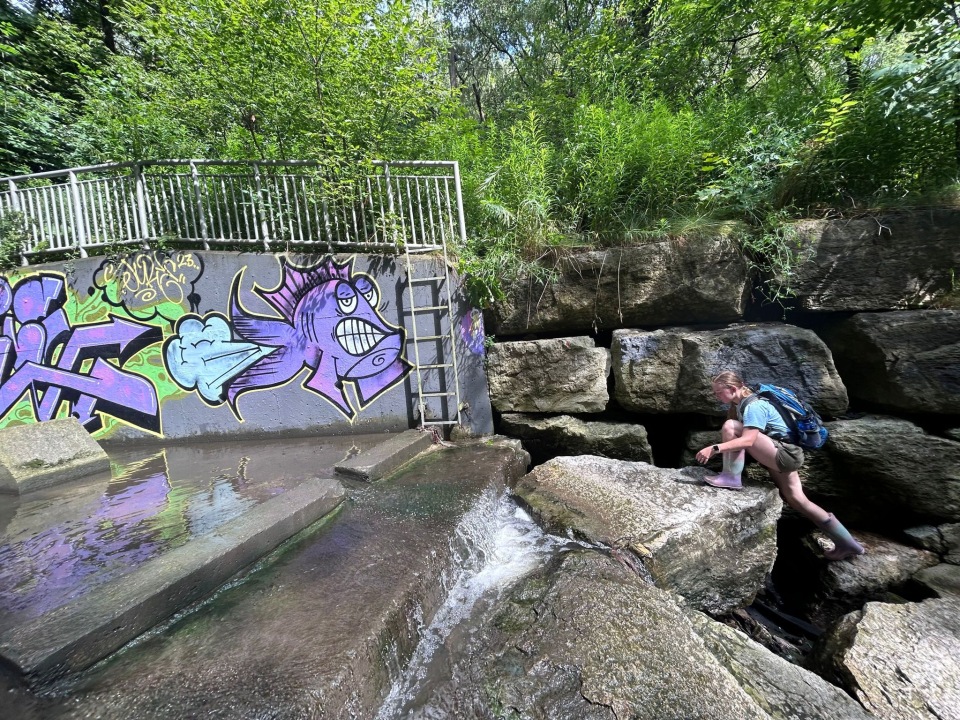
Here’s what happens when we take risks
So why do we want children to embrace the risks? It turns out there is ample evidence — with countless references to literature shared in the Canadian Paediatric Society document — of benefits for their physical, mental and social-emotional development.
Risky play helps get kids outside — and that means more time being active and less time being sedentary.
“There’s a big benefit because risky play is really outdoor play, and outdoor play increases physical activity and physical literacy,” Beno says. “It’s especially important in a time when so many kids are not that physically active anymore.”
Beyond getting kids moving around, risky play could even contribute to modulating the immune system. Beno points to a 2020 study that showed that adding plants and natural or loose elements (like logs or barrels) for digging and climbing can help diversify your microbiome.
Studies are also quite clear when it comes to mental and social-emotional health benefits.
“Anytime you allow children some independence and autonomy, they’re going to develop skills that allow them to recognize risk and manage it on their own.”
We can feel that being outdoors is calming, but the risky play aspect adds a new layer of development, Beno says.
“You learn coping strategies, resiliency skills, it reduces anxiety and improves mood — and that has big benefits for kids as they grow into the adolescent years and beyond.”
Beno, in fact, has seen firsthand the impact of risky play. Her two children attended camp at the Brick Works for several years in the early 2010s. Now young adults, they still remember playing with natural elements, whittling with knives, cooking with fire, walking around steep hills and more.
“In combination with other experiences there, I think it made them more adventurous and more social. They were young when they started and it kind of took them out of their comfort zone.”
Getting started with risky play
‘Facilitating risky play involves creating safe, supportive environments that encourage risk-taking, adjusting communication to foster confidence rather than fear and implementing policies and practices that prioritize children’s health and development while ensuring safety,” according to SickKids.
The common phrase goes that risky play means keeping children “as safe as necessary,” not “as safe as possible.”
SickKids offers several risky play tips for parents and guardians, including considering supervising children less closely when they are in hazard-free environments, ensuring there is time in a child’s schedule for free play, and pausing for 15–30 seconds to observe a child’s state of play before intervening.
“There’s also the language that we use around children,” Beno says. “Instead of immediately saying ‘be careful, stop, slow down,’ create teaching moments like ‘how are you doing up there, what’s your plan to get down?’
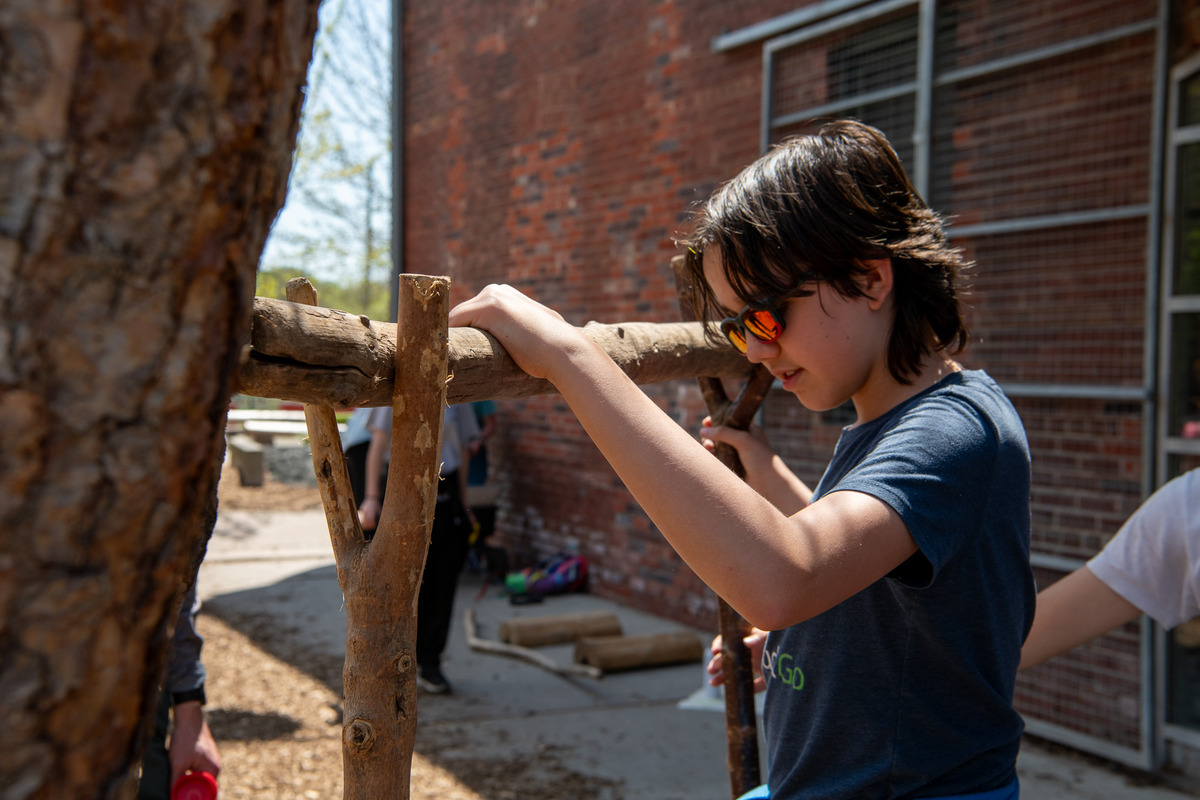
Risky play at Evergreen Brick Works
“A camp in a place like the Brick Works is really a role model for other camps for children,” Beno says. “It really helps support the movement towards making this accessible. Not every child gets to — or wants to — go to sleepover camp. Having the ability right in the city for experiences where they would be challenged in nature creates an equitable opportunity that might not otherwise exist.”
Just like a plant needs sunshine to grow, time spent connecting with nature is key to a child’s development. Through experiential learning and play in outdoor settings, we help children and youth build confidence in problem-solving and skill development. Click below to learn about camps, courses and school visits at the Brick Works.

